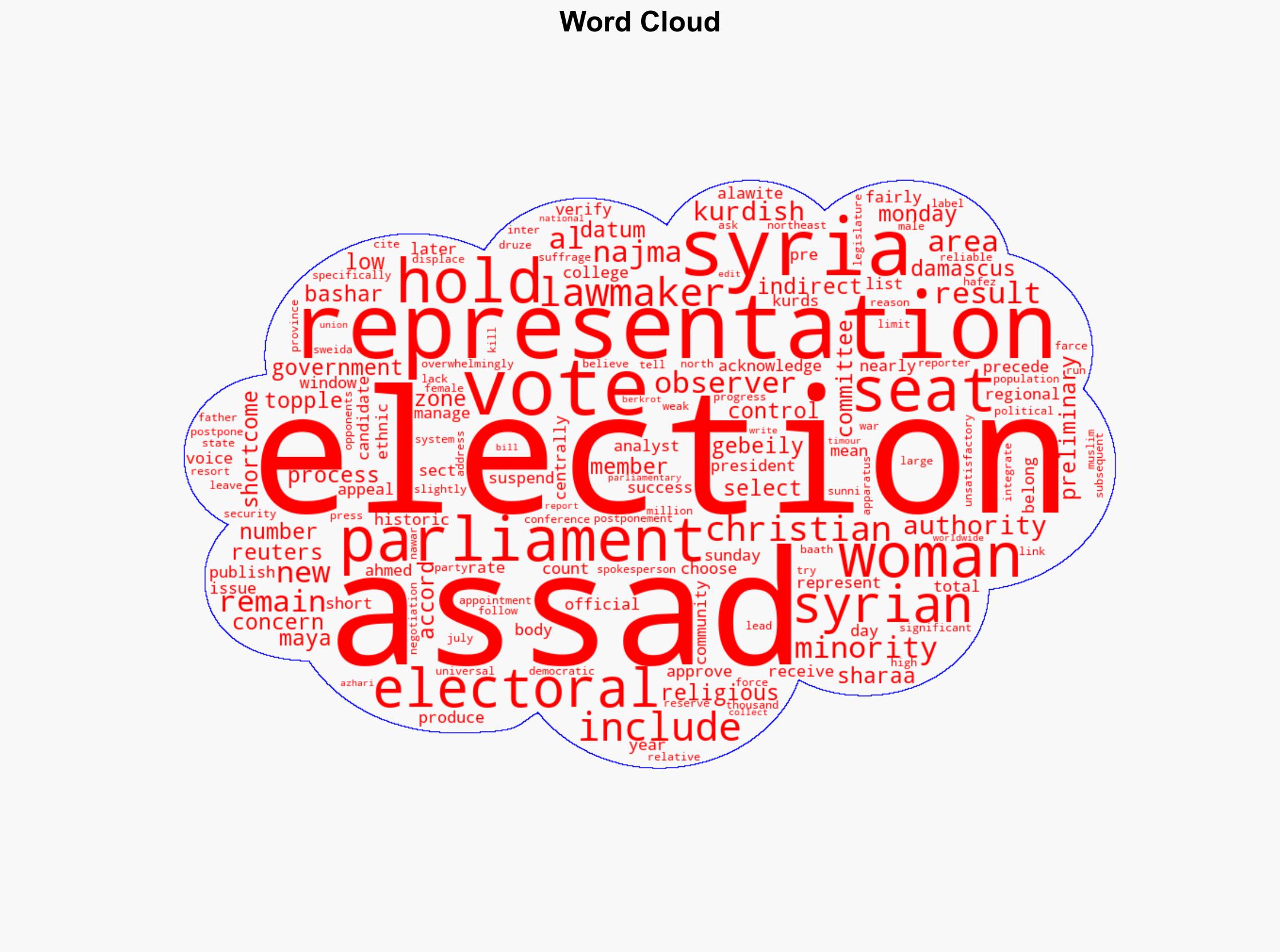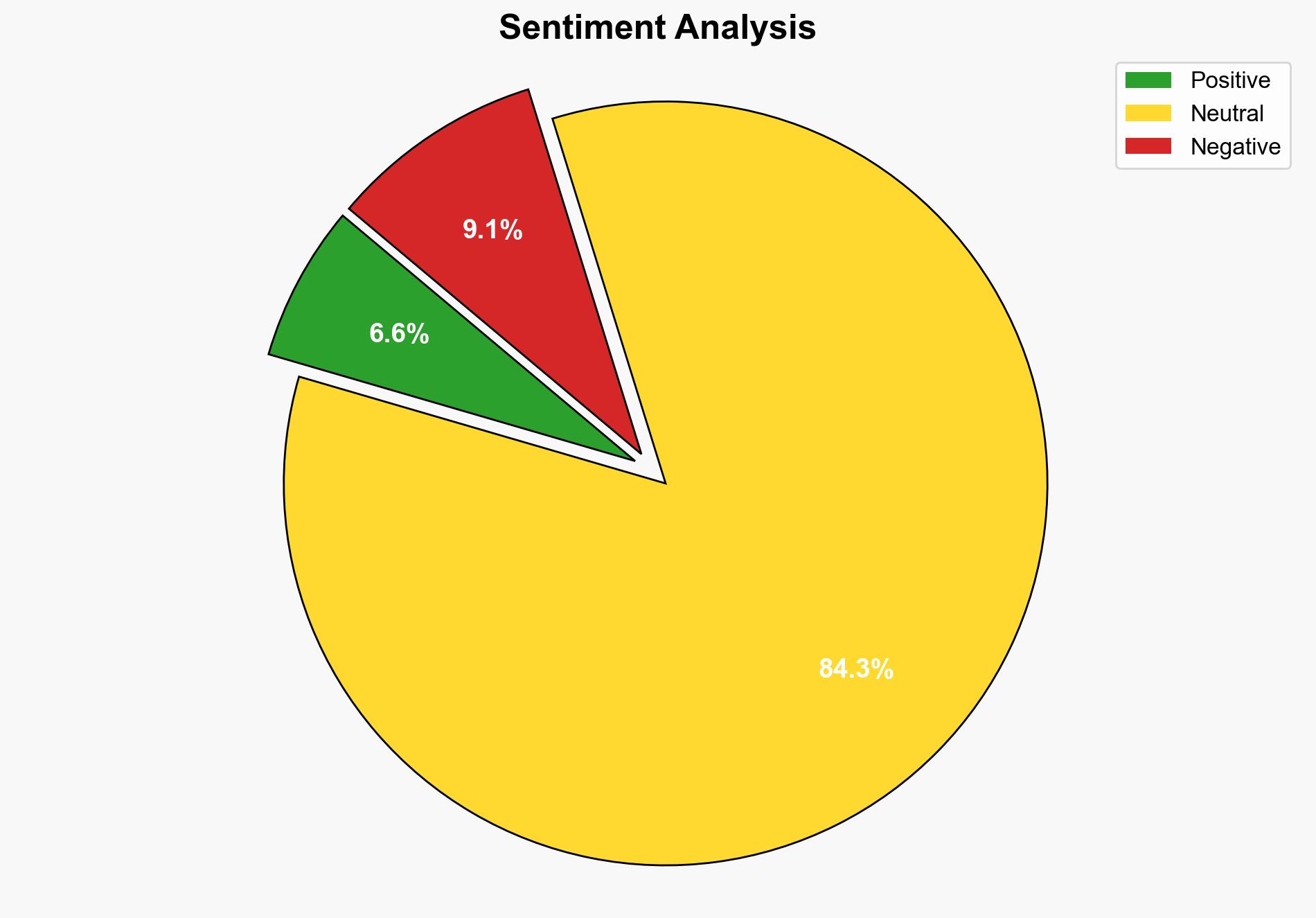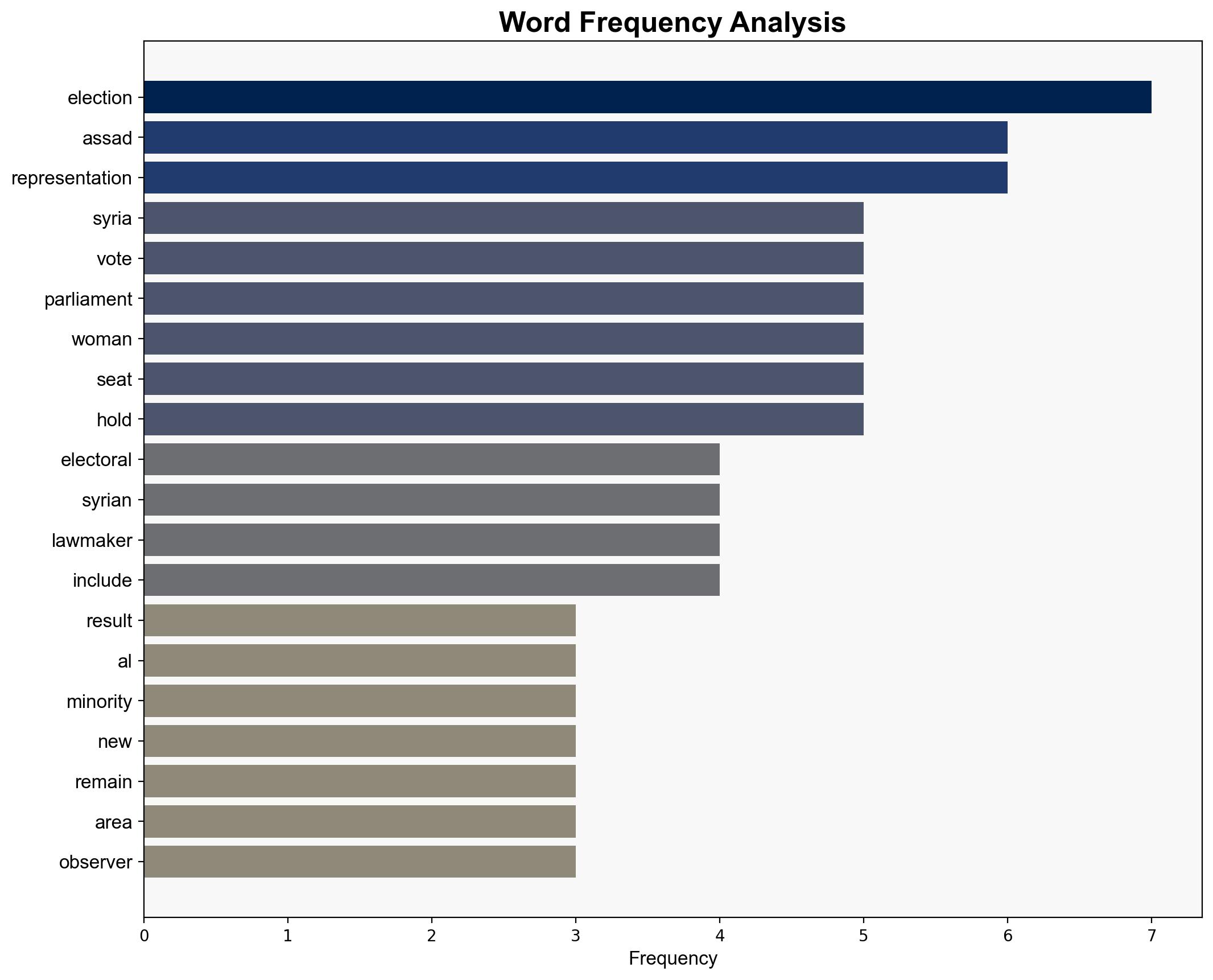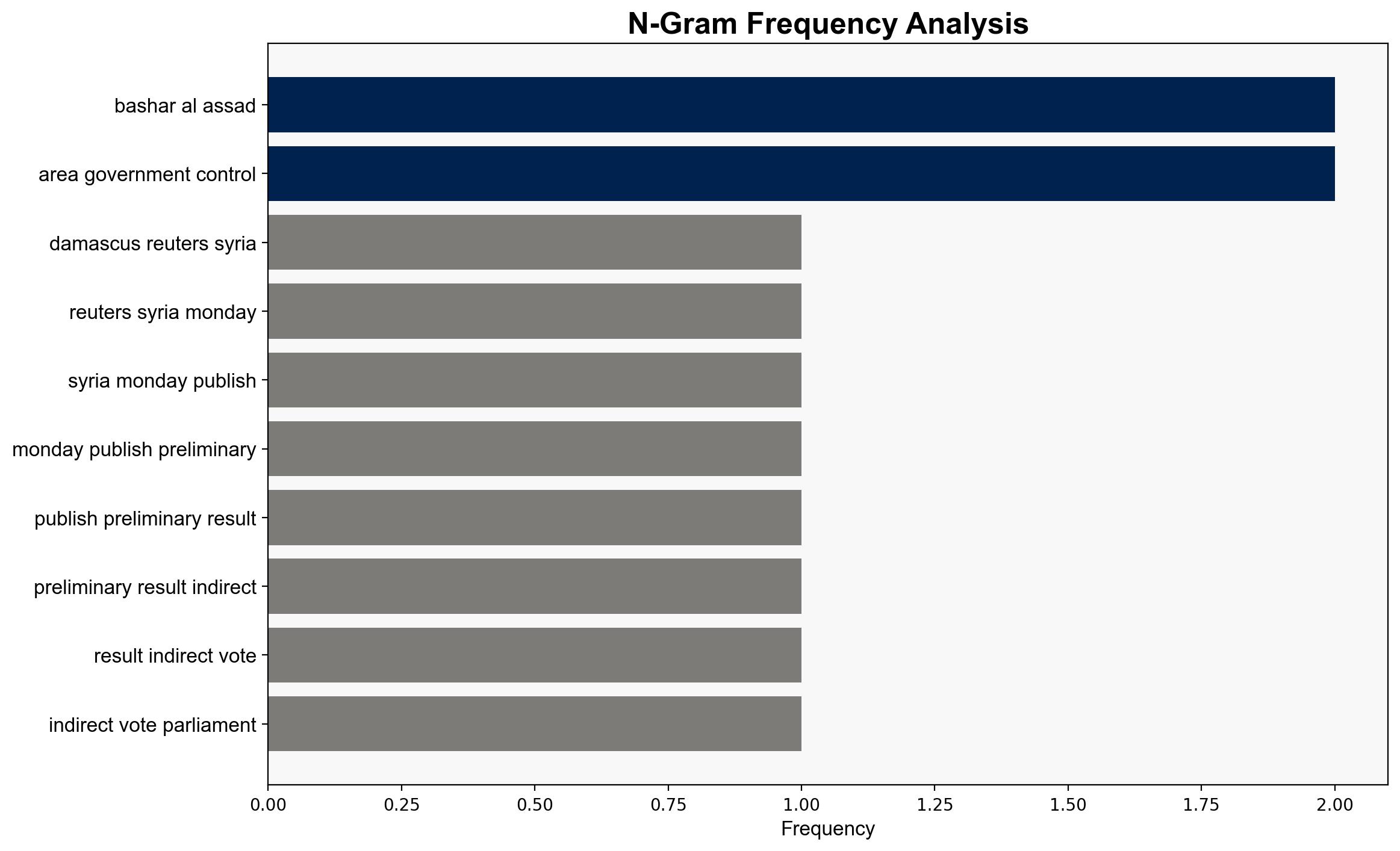First results for Syria’s new parliament show low share for minorities women – The Star Online
Published on: 2025-10-07
Intelligence Report: First results for Syria’s new parliament show low share for minorities women – The Star Online
1. BLUF (Bottom Line Up Front)
The analysis suggests a moderate confidence level that the Syrian parliamentary election process is strategically manipulated to maintain the current power structure, limiting representation of women and minorities. The most supported hypothesis is that the election results are designed to consolidate power rather than reflect genuine democratic processes. Recommended action includes diplomatic engagement to encourage electoral reforms and increased international monitoring of future elections.
2. Competing Hypotheses
1. **Hypothesis A**: The low representation of women and minorities in the new Syrian parliament is a deliberate strategy by the Assad regime to maintain control and suppress potential dissenting voices.
2. **Hypothesis B**: The election results are a consequence of logistical challenges and security concerns in war-torn regions, inadvertently resulting in underrepresentation of women and minorities.
Using ACH 2.0, Hypothesis A is better supported due to historical patterns of governance by the Assad regime and the pre-approval of candidates, which suggests intentional manipulation. Hypothesis B is less supported due to the lack of evidence indicating significant efforts to overcome these logistical challenges.
3. Key Assumptions and Red Flags
– **Assumptions**: It is assumed that the Assad regime prioritizes stability and control over democratic representation. Another assumption is that logistical challenges are significant enough to impact election outcomes.
– **Red Flags**: The pre-approval of candidates and the centralized management of elections suggest potential manipulation. The postponement of votes in certain areas raises questions about the inclusivity of the process.
– **Blind Spots**: There is limited information on the internal decision-making processes of the Syrian government and the extent of international influence on the elections.
4. Implications and Strategic Risks
The current electoral outcome could lead to increased domestic unrest and international criticism, potentially destabilizing the region further. The lack of representation for minorities and women may exacerbate social tensions and hinder post-conflict reconciliation efforts. Geopolitically, this could affect Syria’s relations with neighboring countries and international actors advocating for democratic reforms.
5. Recommendations and Outlook
- Engage with international bodies to advocate for electoral reforms and increased transparency in future elections.
- Encourage the deployment of international observers to ensure fair representation and accountability.
- Scenario Projections:
- **Best Case**: Reforms lead to increased representation and stability.
- **Worst Case**: Continued manipulation results in heightened conflict and regional instability.
- **Most Likely**: Limited reforms with ongoing international pressure for change.
6. Key Individuals and Entities
– Bashar al-Assad
– Ahmed al-Sharaa
– Nawar Najma
7. Thematic Tags
national security threats, electoral integrity, regional stability, minority rights





